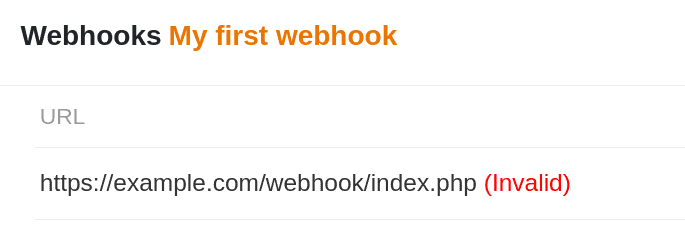Table of Contents
If a webhook is set up for a SeaTable base, SeaTable sends a POST request to the target URL whenever a change is made. Normally, the receiving system returns a status message in the form of a three-character status code , which SeaTable then processes and disables the webhook if necessary.
The most common HTTP status codes
There is a whole range of status codes, but it is enough to know the most common feedbacks:
- 200 - Successful
- 400 - Bath request
- 403 - Forbidden
- 500 - 511 - Server errors
By far the most important status code is 200, which indicates that the request has been received and successfully processed.
SeaTable disables webhooks on errors
When SeaTable sends a webhook, SeaTable expects a response in the form of such an HTTP status code. If SeaTable receives no status code or a status code other than 200 back five times in a row, the webhook is set to invalid status and execution is interrupted.

Reactivate an inactive webhook
An invalid webhook can be reactivated at any time. Switch to editing the invalid webhook by clicking and save the webhook again without making any changes. This will make the webhook active again immediately.
To avoid deactivation again, the receiving system should process the webhooks reliably and return the status code 200 in each case.